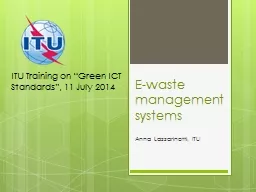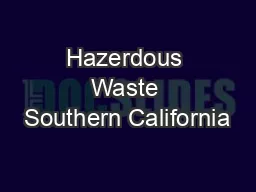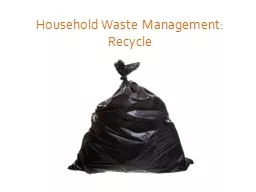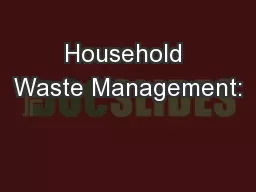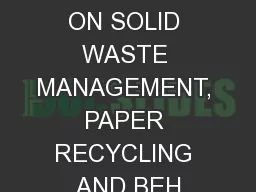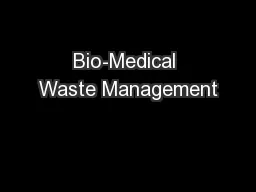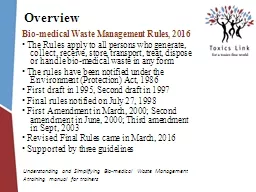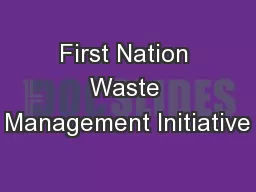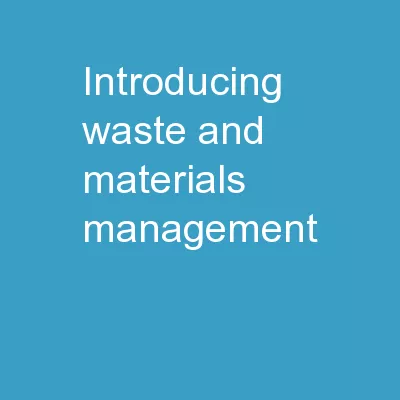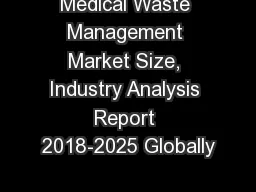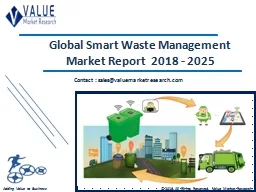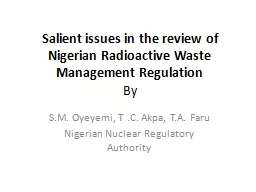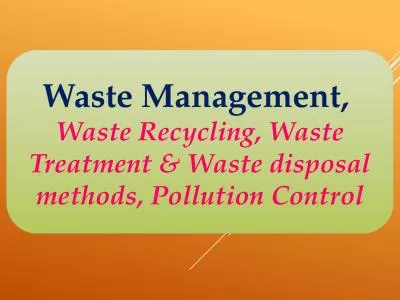PPT-E-waste management systems
Author : phoebe-click | Published Date : 2016-06-28
Anna Lazzarinetti ITU ITU Training on Green ICT Standards 11 July 2014 Ewaste management Ewaste definition Scope for regulation and standardization Principles
Presentation Embed Code
Download Presentation
Download Presentation The PPT/PDF document "E-waste management systems" is the property of its rightful owner. Permission is granted to download and print the materials on this website for personal, non-commercial use only, and to display it on your personal computer provided you do not modify the materials and that you retain all copyright notices contained in the materials. By downloading content from our website, you accept the terms of this agreement.
E-waste management systems: Transcript
Download Rules Of Document
"E-waste management systems"The content belongs to its owner. You may download and print it for personal use, without modification, and keep all copyright notices. By downloading, you agree to these terms.
Related Documents

